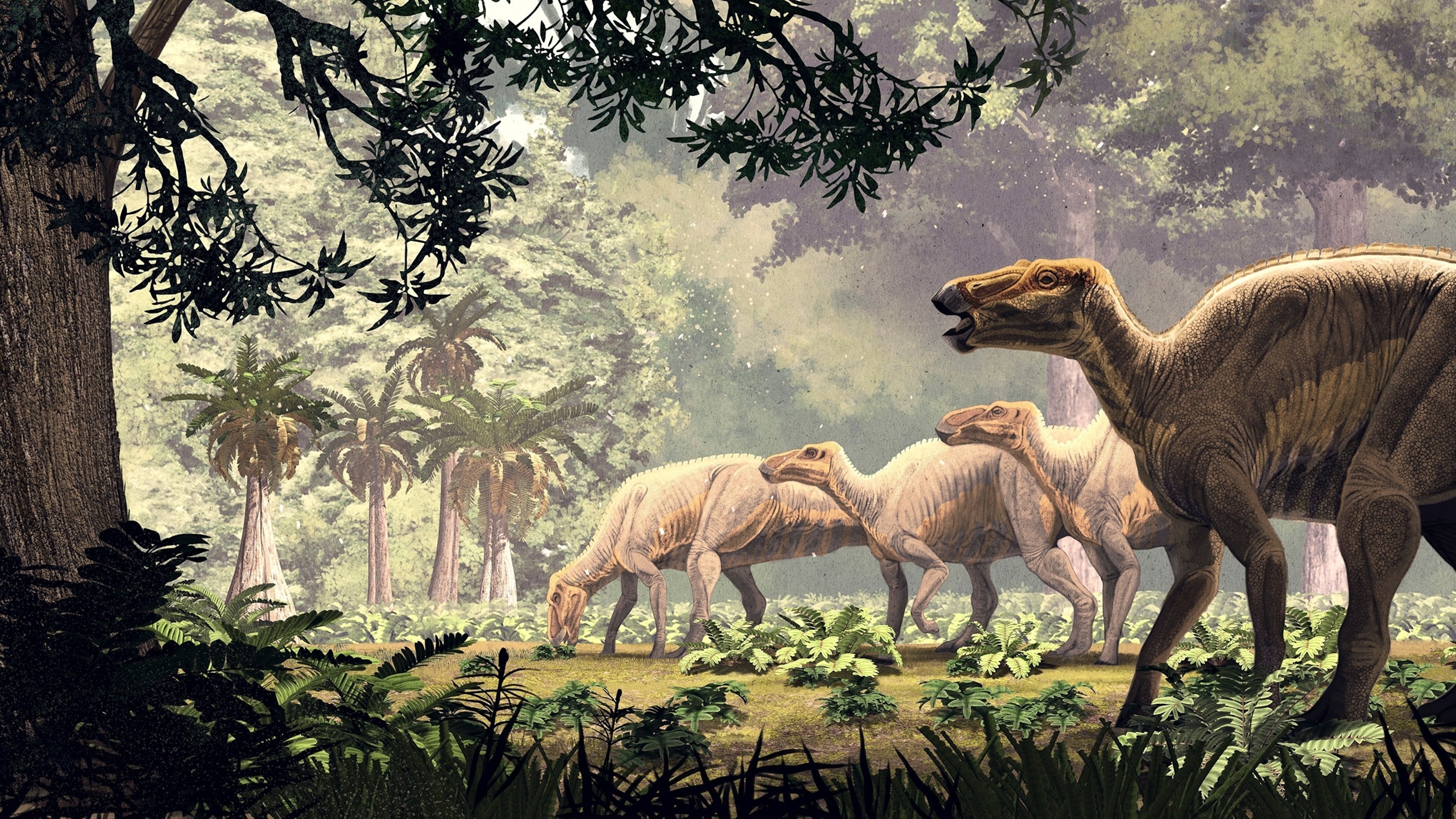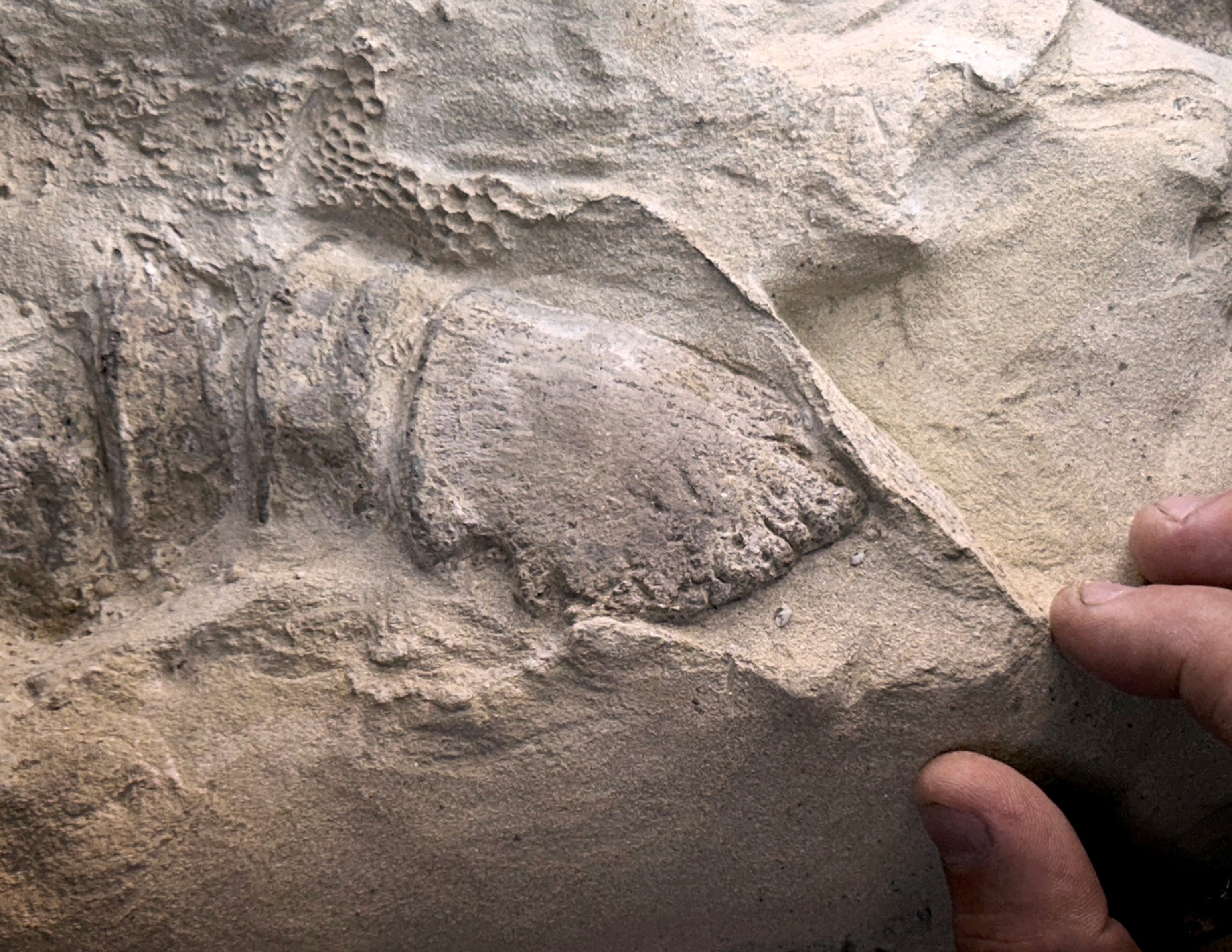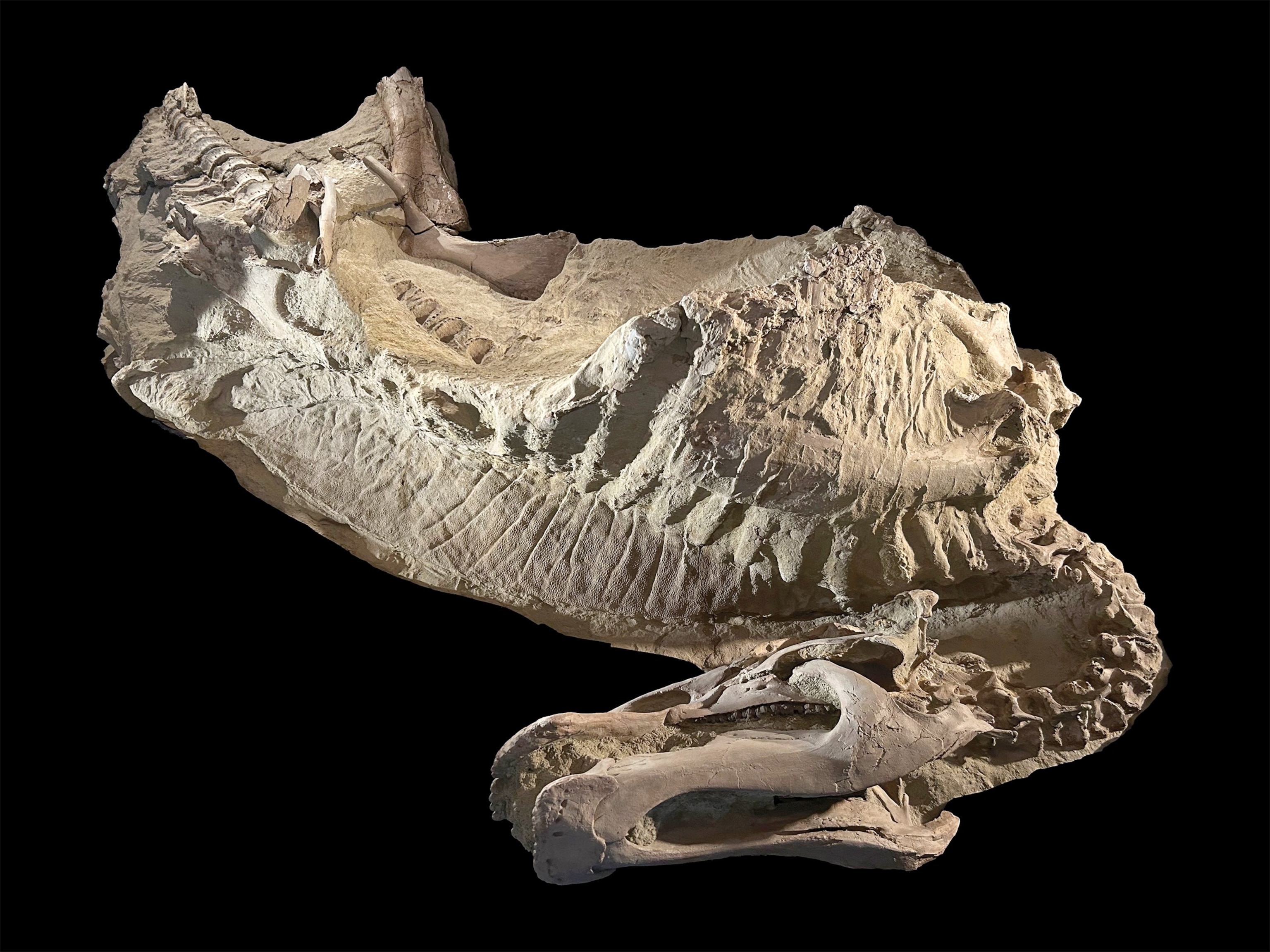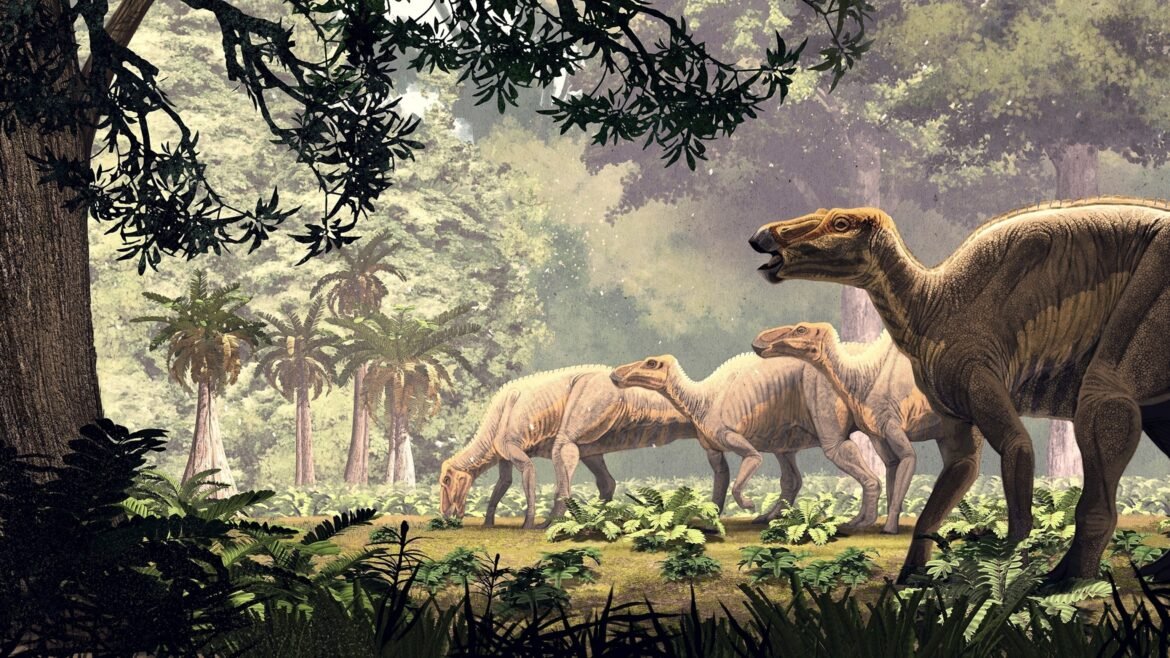Skeletons of duck-billed dinosaurs found more than 100 years ago are so well preserved that they contain fleshy body parts of extinct species embedded in thin layers of clay, scientists say.
In the early 20th century, specimens of Edmontosaurus annectens, known for their long skull resembling a duck’s beak, were found in eastern Wyoming. A recent re-examination of those fossils by paleontologists at the University of Chicago revealed that the fossils contain not just bones, but mummified body parts protected beneath a clay mask, according to a paper published last week in Science.

Archival photographic representation of Edmontosaurus annectens.
Román García Mora/stocktrek Imag/Getty Images
Among the bones are “incredibly preserved” pieces of skin, quills and hooves, the researchers said.
The “fleshy” parts are not fossilized meat but delicate clay molds formed by microbes as the animals decomposed, according to the article.
The uniform layers of clay are held together by sandstone, rather than true fossilized soft tissue, probably formed as a surface template on the decomposing corpse, with the help of biofilms.
This contrasts with typical soft tissue preservation, which occurs in fine-grained, oxygen-poor environments such as lagoons or seabeds, and results in the fossilization of delicate parts such as feathers and skin, the researchers said.

The hoof, preserved in section as a very thin layer of clay, covers the toe bone of an adult mummy of the adult duck-billed dinosaur Edmontosaurus annectens.
Tyler Keillor/Fossil Lab
When the specimens were first discovered. In the thick, oxygenated river deposits, scientists assumed these were textures of skin and fossilized body parts. But closer examination of the original skeletons, as well as the findings of two more mummified E. annectens, a juvenile and an adult, demonstrated otherwise.
The late juvenile E. annectens is the first subadult dinosaur mummy and the first large-bodied dinosaur with a “fully preserved carnal outline,” including the neck and trunk crest.
The adult specimen is the first hadrosaurid to retain the entire row of spikes on its tail. It is also the first known hoofed tetrapod, marking the first reptile with hoofed legs, according to the article.

The mummy of a juvenile duck-billed dinosaur, Edmontosaurus annectens, was preserved as a dried corpse resting on its ribcage about 66 million years ago.
Tyler Keillor/Fossil Lab
The midline crest and tail quills of E. annectens They reveal a “much more complex skin” than historical restorations have suggested, the researchers said.
The species also has functional and morphological similarities with some modern squamates, the largest order of reptiles containing lizards and snakes.

